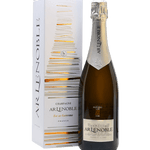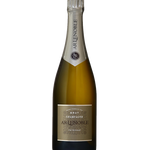You have no items in your shopping cart.
The Art of Decanting and Aerating Red Wine: A Complete Guide

For wine lovers, decanting red wine is more than just an act of transferring the wine from the bottle to a glass vessel. It is a crucial part of wine appreciation that can elevate the taste, aroma, and overall experience. If you're new to the concept, you may be wondering when to decant red wine and how long to aerate red wine to make the most of it. These practices not only help in softening harsh tannins but also in enhancing the wine’s natural aromas and flavors. This guide will walk you through everything you need to know about decanting and aerating red wine, providing you with the best practices for a perfect wine experience.
When to Decant Red Wine?
Decanting red wine is necessary to help the wine breathe and separate any sediment that may have formed in the bottle, especially in aged wines. But when should you decant red wine? The process is often best suited for certain wines, and knowing when to decant depends on a few factors: the age of the wine, the type of wine, and whether it needs to be aerated to soften its tannins or release its bouquet.
Young Red Wines:
Young wines typically have more tannins, which can make them taste a bit harsh or tight. Decanting young red wines can help expose them to oxygen, softening those tannins and allowing the wine to open up, revealing its fruitiness and complexity. Wines such as Cabernet Sauvignon, Syrah, and Zinfandel usually benefit from decanting for 30 minutes to 1 hour.
Aged Red Wines:
Older red wines, such as Bordeaux, Barolo, or older Pinot Noir, usually have fewer tannins and are already more delicate. For these wines, you don’t need to decant them for as long. Decanting for 15 to 30 minutes is typically enough to allow the wine to breathe, separating any sediment and enhancing the wine’s subtle aromas. Over-decanting aged wines can cause them to lose their elegance, which is why shorter aeration times are recommended.
Wines with Sediment:
Wines that have been aged for several years may have sediment in the bottle. Sediment consists of organic particles such as tannins and pigments that have settled over time. If you’re pouring an aged red wine, decanting helps separate the sediment, which can give the wine a gritty texture and off-flavors if consumed.
Why Decant Red Wine?
There are several key reasons why you should decant red wine, and understanding these benefits will give you a deeper appreciation for this process.
-
To Separate Sediment:
Aged red wines, especially those that are unfiltered, tend to develop sediment, which can negatively impact the taste and mouthfeel. Decanting helps filter out this sediment, ensuring that you enjoy a smooth, clean wine. If you want to learn more about what sediment is and how it affects wine, visit our article on what is red wine.
-
To Enhance Aromas and Flavors:
Decanting allows the wine to interact with air, which accelerates the release of aromatic compounds. This is especially important for young, tannic wines, which need a little more time to soften and express their full spectrum of flavors. Aeration helps open up the wine, allowing you to experience its full complexity.
-
To Soften Tannins:
Tannins are the compounds in wine that give it structure and dryness. Decanting helps soften tannins, making the wine feel smoother and less astringent. For full-bodied reds, such as Cabernet Sauvignon and Syrah, decanting can improve the drinkability by softening harsh tannins.
-
To Improve the Wine’s Mouthfeel:
Through decanting, the texture of the wine can also improve. Some wines may feel tight and closed off in the bottle, but after being exposed to air for a while, they open up and feel more balanced. Decanting ensures that you get the best possible mouthfeel when drinking.
How Long to Aerate Red Wine?
Aerating red wine involves exposing it to air, which helps it breathe and allows the flavors to evolve. But how long to aerate red wine? The length of time required for aeration depends largely on the wine’s age, body, and tannin level.
-
For Young Red Wines:
Aerating young red wines helps them soften and develop their full range of flavors. Generally, 30 minutes to 1 hour of aeration is ideal for these wines. If you’re decanting Cabernet Sauvignon or Syrah, you’ll notice that aerating these wines helps release the more complex flavors, allowing the wine to evolve in the glass.
-
For Older Red Wines:
Older red wines, such as Barolo, Bordeaux, or Aged Pinot Noir, typically don’t require as much time for aeration. These wines are more delicate and have already matured. Aerating for 15 to 30 minutes is enough to bring out the best in them without overwhelming their subtle complexities.
-
For Medium-Bodied Reds:
Wines like Merlot or Sangiovese often require 30 minutes of aeration. They are generally well-balanced but can still benefit from exposure to air to let their fruit flavors and aromas come through.
-
For Full-Bodied Reds:
For wines like Zinfandel or Shiraz, you may want to aerate for 45 minutes to 1 hour to really open up the wine and allow it to reach its peak. These wines are generally tannic and can evolve significantly with time in the decanter.

How Long Should You Decant Red Wine?
The question of how long to decant red wine is one that every wine enthusiast should know. While the answer can vary depending on the wine type and age, here’s a general guideline:
-
Decanting Young Wines:
Wines like Cabernet Sauvignon, Syrah, and other full-bodied reds benefit from longer decanting times, usually between 30 minutes to 1 hour. This allows the wine to soften and reveals its aromas and flavors.
-
Decanting Aged Wines:
Older wines, such as Bordeaux and Barolo, require much less time to decant. 15 to 30 minutes is typically enough to allow the wine to separate from any sediment and begin to breathe.
-
Personal Preference:
The ideal decanting time can also depend on your personal taste. If you enjoy a more robust wine, you might choose to decant it longer. If you prefer a more subtle flavor, decanting for a shorter period may be more suitable.
Why Aerate Red Wine?
The reason why aerate red wine is important boils down to one word: transformation. When wine is exposed to oxygen, it begins to evolve, with its flavors and aromas becoming more pronounced. Here are a few reasons why aerating red wine is a vital step:
-
Softens Tannins:
Tannins are an essential component of red wine, but they can be quite harsh in younger wines. Aeration helps soften these tannins, creating a smoother drinking experience.
-
Enhances Aromas:
When wine is exposed to oxygen, the aromatic compounds in the wine are released, allowing the wine to express its bouquet. Aeration unlocks the full range of smells, which can dramatically alter your perception of the wine.
-
Releases Complex Flavors:
Red wine that has been aerated is able to reveal a wide range of flavors that would otherwise remain hidden. By allowing the wine to breathe, you can experience the full depth and complexity of its profile.
-
Improves Drinkability:
Aeration can turn a wine that initially feels closed off or too harsh into something smooth, balanced, and easy to drink. Whether you're drinking a young or aged red wine, aeration can improve its overall drinkability.
Conclusion
Decanting and aerating red wine are essential practices that can transform your drinking experience. By understanding when to decant red wine, how long to aerate red wine, and why aerating red wine is beneficial, you can elevate the flavor, aroma, and mouthfeel of the wine. Remember, young reds need more aeration, while older wines only need a brief period of decanting. Experiment with decanting times, and over time, you’ll discover the perfect balance for each bottle.
Wine is about exploration, and decanting and aerating are tools that help you unlock the full potential of your wine. Whether you're opening a bottle of Cabernet Sauvignon or sipping an older Bordeaux, these techniques will enhance your wine-tasting journey and ensure that every glass is as enjoyable as possible.
Frequently Asked Questions (FAQs)
-
When to decant red wine?
Decant red wine when it's young and tannic or when it's aged and has sediment. Younger wines benefit from 30 minutes to 1 hour, while older wines should only be decanted for 15 to 30 minutes.
-
How long to aerate red wine?
Young red wines typically require 30 minutes to 1 hour of aeration, while older wines should be aerated for 15 to 30 minutes.
-
Why aerate red wine?
Aerating red wine softens tannins, enhances aromas, releases flavors, and improves the overall drinkability of the wine.
-
How long should you decant red wine?
Decant young red wines for 30 minutes to 1 hour, and older wines for 15 to 30 minutes. Your personal preference can also influence the decanting time.
-
What’s the best way to decant red wine?
Pour the wine into a decanter, allow it to breathe for the recommended time, and enjoy the transformed flavors and aromas.


















